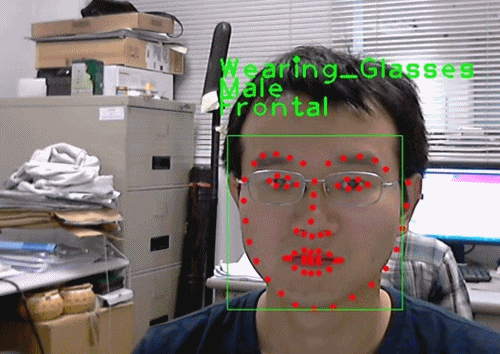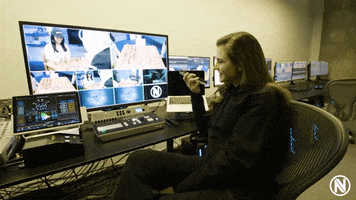

Exclusive Dynamics offers reliable & affordable CCTV for your home or business.

1. Analog Systems
2. IP based Systems
3. Numberplate Recognition
4. Facial Recognition
5. People Counting
6. Thermal Imaging
7. Remote Monitoring
8. Traffic Control
9. Item Following

CCTV stands for closed-circuit television and is commonly known as video surveillance. “Closed-circuit” means broadcasts are usually transmitted to a limited (closed) number of monitors, unlike “regular” TV, which is broadcast to the public at large. CCTV networks are commonly used to detect and deter criminal activities, and record traffic infractions, but they have other uses.
CCTV technology was first developed in 1942 by German scientists to monitor the launch of V2 rockets. It was later used by American scientists during the testing of the atomic bomb.

In recent years CCTV surveillance has become an essential pillar of security delivering the ability to proactively prevent many crimes from progressing as well as retrospectively enabling crucial investigation of incidents that do progress despite the presence of the preventative security measures. Proactive CCTV security: Deterrence through the presence of CCTV surveillance and prevention of incident progression with ‘front footed’ CCTV operator response which includes audio deterrent warnings and real-time escalation to keyholders and blue light first responders. Retrospective CCTV security: CCTV footage can provide crucial evidence to support police and other emergency services in gathering evidence relating to an incident. This evidence can, under certain circumstances, be used in court to support prosecution.

CCTV surveillance can deter potential criminals. When a crime does occur, video footage can help law enforcement to investigate and later provide evidence for prosecution in a law court. Used in conjunction with CCTV, audio, thermal and other types of sensors can alert officials to occurrences that are out of the ordinary, e.g. a fire or gun shots at a location. For businesses, CCTV cameras can detect and monitor in-house criminal activities. Prisons may use video surveillance to prevent drones from delivering drugs and other contraband to prisoners. Security cameras are able to monitor areas that are not easily accessible, e.g. rooftops.
Using CCTV cameras, emergency services and rescue workers are able to assess and monitor events in real time to relay a “situation” via video to disaster management teams, e.g. from inside a burning building, from a cave or from a helicopter flying over a scene.
Cameras at traffic lights and elsewhere in cities monitor people to gather traffic statistics as well as evidentiary footage for speeding. An heir to the IoT, the AoT is a Chicago initiative to collect real-time data, primarily weather and environment, about the city. Some sensory nodes include security cameras that analyze the images they record but, in order to protect individuals’ privacy, do not transmit or store these images. In the main, a limited number are stored for use by senior researchers in order to “develop the computer vision software”. The project has met with some resistance from privacy watchdogs.
There are about 43 facial muscles that express people’s thoughts and feelings. Smart software can identify these expressions, e.g. pain or anxiety, from images more easily that people can. CCTV cameras can also monitor patients – for instance children or the elderly – to identify potential medical crises, e.g. a stroke, or an epileptic or asthma attack.
CCTV used to research suicide found that 83 percent of people attempting to throw themselves in front of a train showed specific behaviors. These were later analyzed from CCTV footage and are now used to alert monitor watchers to potential suicides. Surveillance networks are also used by researchers to record crowd activities in public places and prevent anti-social behaviors. For instance, cameras have been used at schools for security, and to record bullying or playground incidents on video.
Market intelligence garnered from video surveillance of customers is being used to analyze buying trends and enable enhanced strategizing, e.g. how do people shop, which aisles do they traverse the most, how likely are they to respond to calls to action within different store layouts. Heat maps can show the highs and lows of shopper traffic at specific locations in a store, helping stores to identify peak buying times, preferred promotion types, and staffing requirements for peak shopping periods.
Some studies have shown that active surveillance in any CCTV system is hampered by ineffective
system configurations, poor quality video recordings, faulty or old equipment, inadequate
communication between stakeholders, inefficient management policies, ineffective
workplace setup (e.g. lack of space), background noise (typical in security environments),
inclement weather and lack of familiarity by operators with particular areas they are observing.
The main criticism against CCTV is its potential to intrude on individuals’ privacy, employees
(or customers) feeling that Big Brother is watching, and potential privacy breaches.
Many of these issues can be mitigated by network monitoring software like PRTG
According to Wesley G. Skogan, in the future other digital technologies shall complement CCTV to create a simultaneously more autonomous and proactive surveillance process. These technologies include facial recognition, linked cameras, intelligent hardware, license plate readers, drones, police body cameras, and the IoT. These technologies will increase passive surveillance, the ability of systems, rather than people, raise alerts. Mass surveillance and a greater presence of security cameras, as we are already seeing in China, could spread to other countries.
One of the fastest growing trends in CCTV security, network monitoring software ensures
CCTV systems stay up and running, and can provide 24/7 monitoring of an area and reliable
notifications. Monitoring systems can alert staff when there is a power failure
(and automatically switch to a backup power supply), constantly check for unusual
activity on the network, and be configured for different types of usage, risks,
and requirements (e.g. medical or retail).
Monitoring these networks professionally is essential to ensure compliance with international privacy
and security regulations, to protect personal data, and to efficiently process large
amounts of image data.